
20 Days Northern and eastern Tibet Kham Culture Loop Tour
(ETT008) Lhasa- Nyingchi-Chamdo- Markam - Tengchen- Sok D Zong-Nagchu-Namtso-Lhasa
-
Tour Type:
Escorted by private guide and vehicle; leave 365 days a year!
-
Trip Level:
Easy - suitable for all levels of fitness, family with kids and senior groups.
-
Trip Level Guide:
- Easy - suitable for all level of fitness, family with kids and senior groups.
- Moderate - suitable for ones with average level fitness, family with kids bigger than 12 yrs.
- Moderate to Strenous - suitable for ones physically fit; have experiences of high altitude trek.
- Strenuous: suitable for adventures and individual with physically fit and healthy.
-
Season:春
Spring夏
Summer秋
Autumn冬
Winter
Overview
If you want to see what original Tibetan life is and how Tibetans live harmoniously with nature, you can go to Kham and Amdo areas.This itinerary will take you to see remote areas in eastern and northern Tibet, where the most traditional Tibetan lifestyle remains.
This Lhasa to Kham Loop Route starts from Lhasa to eastern Tibet, north Sichuan Tibetan area along the Sichuan-Tibet Hwy, then to Chamdo, Nagchu and Namtso, at last back to Lhasa. In addition to great authentic culture experience, you will also enjoy different scenery of gorges, glaciers, forests, snow-capped mountains.
The tour is highly recommend to photographers as it is a great route for shooting stunning natural views as well as vivid moments of Tibetan daily life.
At a Glance
Day 1Arrive in Lhasa & Acclimation
Day 2Lhasa sightseeing - Potola Palace, Jokhang Temple and Barkhor
Day 3Lhasa Sightseeing - Drepung Monastery, Sera Monastery
Day 4Lhasa to Basomtso Lake (370km)
Day 5Basomtso Lake - Bayi (180km)
Day 6Bayi to Pomi (198km)
Day 7Pomi to Basu (222km)
Day 8Basu to Markam (362km)
Day 9Markham to Litang (276km)
Day 10Litang to Ganzi (300km)
Day 11Ganzi to Manigango (93km)
Day 12Manigango to Derge (112km)
Day 13Derge to Chamdo (253km)
Day 14Chamdo to Tengchen (210km)
Day 15Tengchen to Sok D Zong (230km)
Day 16Sok D Zong to Nagchu (231km)
Day 17Nagchu to Namtso Lake (215km)
Day 18Namtso/Yangpachen hotspring/Lhasa (220km, 4hrs driving)
Day 19Free Exploration
Day 20Lhasa airport departure
Day to Day Itinerary
Day 1: Arrive in Lhasa & Acclimation
Upon your arrival at Lhasa airport or train station, you will be greeted by your Tibetan guide and escorted to your hotel in Lhasa. From airport to Lhasa city, it only takes half an hour of driving along the Lhasa-airport highway. Driving along the Brahmaputra river, you will not only be amazed by the spectacular plateau scenery, but also have a chance to see a great variety of wild birds.
If you take the train to Lhasa, normally you will arrive in the late afternoon or evening, 20 minutes drive will take you to your hotel in Lhasa city. Check into hotel, have a good rest to acclimatize the high altitude.
Stay overnight in Lhasa
Day 2: Lhasa sightseeing - Potola Palace, Jokhang Temple and Barkhor
In the morning, tourists will visit the famous Potala palace and explore the grandest of this myriad chapel, and experience its audience halls, the jeweled and Golden burial chortens (stupa Tombs) of past Dalai Lamas, and tremendous number of Buddhist frescoes, thangkas, combinations of mandala, etc.
In the afternoon, pay a visit to the holiest temple in Tibet, the Johkang Temple, built during Songtsen Gonpo's reign by princess Wencheng of Tang Dynasty, 647 A.D, and its famous Barkor Kora.(i.e. circling the religious sites)
Stay overnight in Lhasa
Day 3: Lhasa Sightseeing - Drepung Monastery, Sera Monastery
Today, tourists will visit two important monasteries in Lhasa, the Drepung and the Sera.
Drepung monastery is situated at the foothill of a mountain and was founded by Jamyang Choeje in 1416. It was once home to 10000 monks and Ganden podrang in Drepung is famous as it was the government centre during the fifth dalai lama and later moved to the famous potala palace during the fifth dalai lama.
After having lunch, we continue to visit the Sera Monastery, which was founded in 1419 by Tsongkapa's disciple Jamchen Choeje. The most dramatic scene is the Buddhist Scriptures debating held in the courtyard mostly around 6:00 - 7:30 in the afternoon.
Stay overnight in Lhasa
Day 4: Lhasa to Basomtso Lake (370km)
Basomtso Lake or Bagsum-tso, a very beautiful alpine lake, is a long day's drive from Lhasa and a worthly 41km detour off the south Sichuan-Tibet Hwy.
Apart from the sheer beauty of the lake and its surrounding 6000m plus peaks, the site has strong connections with Gesar of Ling, the semimythical ruler of eastern Tibet, and Guru Rinpoche, the Indian sage, both of whom are said to have resided at the lake. Many pilgrimage sites are connected to the two.
Stay overnight by the lake
Day 5: Basomtso Lake - Bayi (180km)
Visit Basomtso Lake and enjoy the beautiful views there in the whole morning. And then leave for Bayi Town (2900m), the capital of Nyingchi area. Continue driving along the south Sichuan-Tibet Hwy about 2 hours to get to Bayi. Upon arrival there, tourists visit a huge cypress tree of over thousand years old. Rest time you can stroll in the modern city in East Tibet.
Stay overnight at Bayi Town
Day 6: Bayi to Pomi (198km)
In the morning, drive from Bayi to Pomi (2750m) along the south Sichuan-Tibet Hwy to Pomi. Formerly known as Tramo, Pomi is a small country capital with well-stocked shops and several hotels and restaurants, making it a logical place to spend the night. In clear weather the surrounding scenery is breathtaking.
Stay overnight at Pomi
Day 7: Pomi to Basu (222km)
Today, continue driving along the south Sichuan-Tibet Hwy to get to Basu Town, fromerly known as pema (Baima). It is a pleasant town that makes for a good overnight stop. Explore around Basu, and visit Neru Monastery & Dola Monastery.
Stay overnight in Basu
Day 8: Basu to Markam (362km)
Drive along the south Sichuan-Tibet Hwy again. Today's final destination is Markam (3850m), which is traditionally known as Garthog Dozong, where the Vigilant PSB commonly catches permit less hitchhikers from Sichuan and Yunnan.
At Markam, the road splits. The southern branch runs 112km over a pass to Yanjing (salt well) and the border with Yunnan, continuing on the Seqin. Yanjing used to be Tibet's major source of salt, once an essential commodity in these parts.
Stay overnight at Markam
Day 9: Markham to Litang (276km)
Head to Litang (4200) along the highway in the morning. Tourists will be surrounded by snowcapped peaks and rest on open grassland, Litang is a pleasant and friendly place to hang out for a couple of days. A horse-racing festival from 1 to 7 August sees the town swelled with Tibetan visitors.
Stay overnight at Litang
Day 10: Litang to Ganzi (300km)
Today we will drive off the south Sichuan-Tibet Hwy to the north Sichuan-Tibet Hwy to Ganzi. The noisy market town of Ganzi (also spelled Kandze and Garze) sits in a valley at 3400m, surrounded by the sleeping giants of the Trola (Chola) range, and is a natural place to break the trip. The gorgeous surrounding countryside is peppered with Tibetan villages and holy monasteries.
Stay overnight at Ganzi
Day 11: Ganzi to Manigango (93km)
The road winds through deep gorges and pretty Tibetan villages before ascending to the wild and craggy scenery of the 4916m Tro-la in the east of Derge. From the pass, the road descends to the crossroads of Manigango.
Yilhun La-tso, a stunning, holy alpine lake bordered by chortens and dozens of rock carvings is about 13 km before reaching Manigango. The lake is backed by the huge glaciers of 6018m Trola peak and it's possible to walk an hour or two up the left side of the lakeshore for glacier views.
Stay overnight at Manigango
Day 12: Manigango to Derge (112km)
Drive west along the north Sichuan-Tibet Hwy for about 112 KM to Derge in the morning. Resting in a valley between the Tibetan border and the Trola (Chola) range to the east, Derge forms the cultural heartland of Kham. While the Chinese influence is evident and growing ripidly in the town, the old town and surrounding villages are very much Tibetan. There are many historically important monasteries in the valleys south of Derge, namely at Pelpung (Chinese: Babang), Dzongsar, pewar (Baiya), Kathok and pelyul (Baiyu).
Stay overnight in Derge
Day 13: Derge to Chamdo (253km)
Continue driving to southwest to Chamdo (3240m), located at the strategic river junction of the Aza-chu and the Ngon-chu. It is a surprisingly pleasant town dominated by the hilltop Jampaling Monastery, below which huddle the Tibetan old town and the Chinese new town.
Over 1000km from Lhasa and 1250km from Chengdu, the town is the major transport, administrative and trade centre of the Kham region. Chamdo has had a troubled relationship with nearby China.
Stay overnight at Chamdo
Day 14: Chamdo to Tengchen (210km)
Today, keep driving west to Tengchen (also called Dingqing), an unremarkable but reasonably pleasant two-street town (4200m). It's possible to make calls at the town's telecom office. Both Tengchen and the surrounding region of Khyungpo are strong centers of the Bon religion. The main reason to stop here is to visit Tengchen Monastery, on a hillside 4km west of the town. This interesting Bon monastery is actually made up of two separate institutions.
Stay overnight at Tengchen
Day 15: Tengchen to Sok D Zong (230km)
Drive to Sok in the morning after a relaxing night. Sok is known for the impressive sok Tsaden Monastery, set on an outcrop in the northwestern suburbs. The monastery, founded by the Mongol leader Gushri Khan, brings to mind a miniature Potala.
The road from Tengchen swings north and starts to climb up to the stunning Shel-la (4830m), the highest and most dramatic pass along the northern route. The road continues past the village of Gubengda, Gyaruptang and Wengdaka and then climbs yet again to the 4500m Chak-la, where turn a corner for a dramatic view of one of the Salweens many tributaries.
Stay overnight in Sok
Day 16: Sok D Zong to Nagchu (231km)
Drive southwest to Nagchu (4500m) that is one of the highest, coldest and most windswept towns in Tibet. Perched on the edge of the Changtang (northern plateau), it is a dismal town of mud and concrete, but is still an important pit stop on the road between Qinghai and Tibet.
It's a literally breathtaking place: Oxygen levels here are only 60% of those at sea level, so be prepared for headaches and watch for the symptoms of altitude sickness. Bring extra clothes, even in summer. Nagchu has a horse-racing festival from 10 to 16 August, when the town swells with up to 10,000 nomads and their tents from all over the Changtang. Accommodation can be very tight at this time.
Stay overnight in Nagchu
Day 17: Nagchu to Namtso Lake (215km)
The road south of Nagchu is the Qinghai Tibet HWY. The road crosses the Goluk Bridge, 109km from Nagchu, and climbs to the Chokse-la, where Tibetans throw into the air the paper prayers they bought at Nagchu bus station. 128 km from Nagchu and 40 km from Damxung is the Chorten Rango, a line of eight chortens that commemorate the eight main events in the life of Sakyamuni (Sakya Thukpa).
Damxung is the turn-off Nam-tso (4718m). Approximately 190km northwest of Lhasa is the second largest saltwater lake in China. It is over 70km long and reaches a width of 30km. Namtso is a tidal lake and the ring marks of earlier lake levels are clearly visible by the shoreline.
Stay overnight by the lake
Day 18: Namtso/Yangpachen hotspring/Lhasa (220km, 4hrs driving)
Day 19: Free Exploration
After a long trip, you might be a kind of exhausted, so today is at leisure. You can have a good rest in your hotel or walk around in the Lhasa city.
Stay overnight in Lhasa
Day 20: Lhasa airport departure
The driver will take you to airport or train station, end the service.
Service Guide
Service Included:
- Tibet travel permit and all other necessary permits to Tibet;
- All entrance ticket fees for all tourist sites listed in the itinerary;
- Personal knowledgeable English-speaking Tibetan local tour guide;
- Personal comfortable, clean and safe vehicle with reliable Tibetan local driver; vehicle ranging from 4WD land cruiser to minibus depending on your group size;
- All lodging listed in the itinerary; it’s your decision about the accommodation class: luxury 5-star international hotel, comfortable 4-star hotel, economic 3-star hotel or budget hostel, guesthouse or tent. Please tell us your accommodation preference when submitting the enquiry; we will arrange the best-value hotels for you.
- Domestic flight/train tickets listed in the itinerary;
- All meals listed in the above itinerary;
- Tourist accident/casualty insurance;
- First aid kit;
Service Excluded:
- International flight to and out of China;
- Chinese visa (Note: we could help you with the Chinese visa application, like providing the invitation letter, presenting the hotel or domestic flight reservation copies, etc that you may need. )
- Domestic flight/train not listed in the itinerary. (We can provide you the domestic flight/train ticket booking service at the BEST discount price; please contact us our travel experts for the details.)
- Meals not specified in the itinerary; usually it costs about USD3-15 per person for one meal in TAR (Tibet Autonomous Region).
- Tips and gratitude to tour guide and driver;
- Personal expenses, like laundry, phone call, snacks, soft drinks (please do the best to avoid the alcoholic beverages during your Tibet trip), optional tour activities, etc.
Contact us for your dream trip now !
Enquire NowYou May Also Like
-
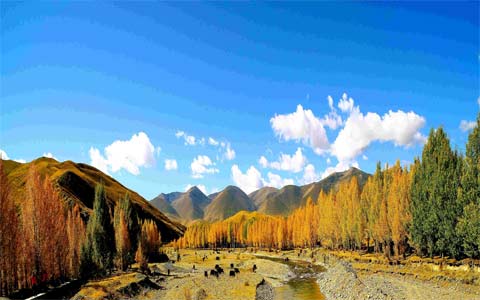 11 Days Amazing Western Sichuan Tour
11 Days Amazing Western Sichuan TourChengdu-Kangding-Daocheng-Yading-Danba-Chengdu
-
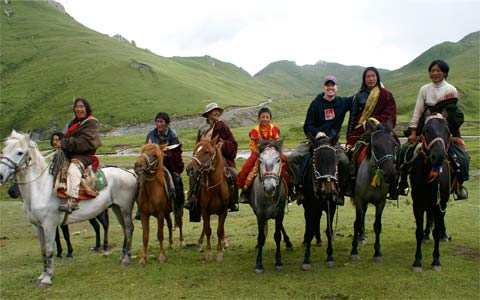 5 Days Happy Road Horse-riding in Songpan Tour
5 Days Happy Road Horse-riding in Songpan TourChengdu-Songpan-Chengdu
-
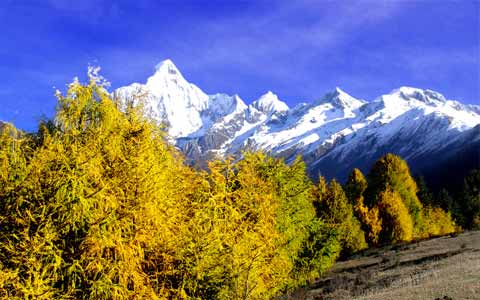 6 Days Trekking Mt. Siguniang, the Oriental ALPs Tour
6 Days Trekking Mt. Siguniang, the Oriental ALPs TourChengdu-Mt. Siguniang-Chengdu
-
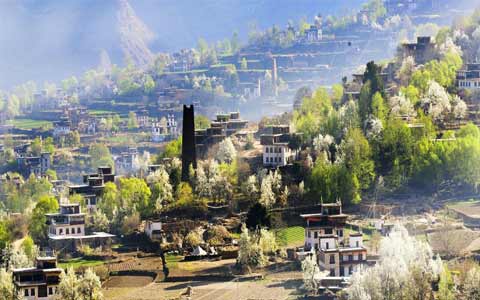 8 Days Western Sichuan Impression - Small Loop Tour
8 Days Western Sichuan Impression - Small Loop TourChengdu-Hailuogou-Kangding-Danba - Chengdu Tour
-
 10 Days Litang Horse Racing Festival Tour
10 Days Litang Horse Racing Festival TourChengdu-Mt.Siguniang-Danba-Xinduqiao-Litang-Kangding-Chengdu
-
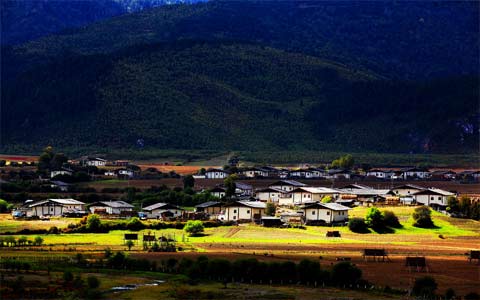 10 Days Looking for Shangri-La, the last piece of pure land on the blue planet
10 Days Looking for Shangri-La, the last piece of pure land on the blue planetChengdu-Kangding-Xinduqiao-Daocheng Yading-Shangri-La
Most Frequently Asked Questions from our Clients

This itinerary is an in-depth route that covers central, eastern and northeastern Tibet. And only few tourists visit these places where you can see the remote and less-developed Tibet and their living condition remains the same as it was before.
Tibetan Travel Guru,Kham Sang
Get A Quotation of this Tour
Get Started - 20 Days Northern and eastern Tibet Kham Culture Loop Tour
You’re getting closer to your dream Tibet vacation! Fill out this form so our travel designers can start helping you plan a trip.
Privacy Policy: Your information is kept strictly confidential. Tibet Vista will never sell, trade, or give away your contact information to a third party.

.jpg)


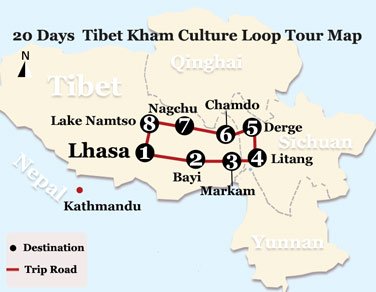

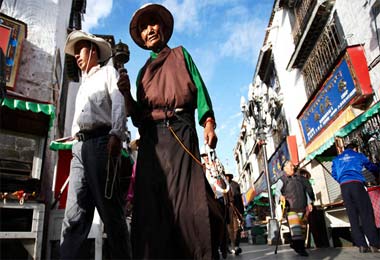
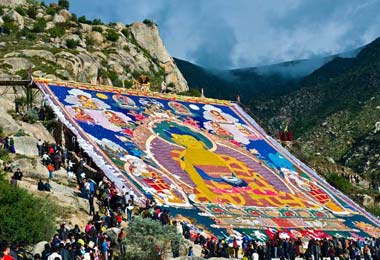
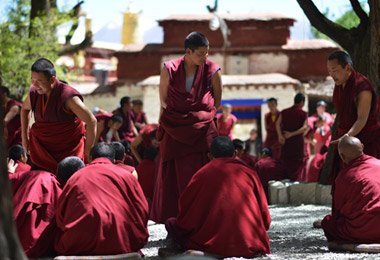
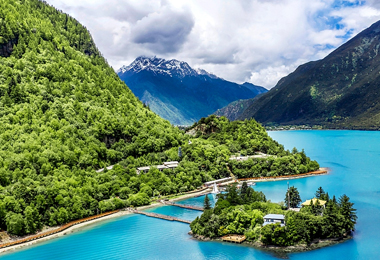

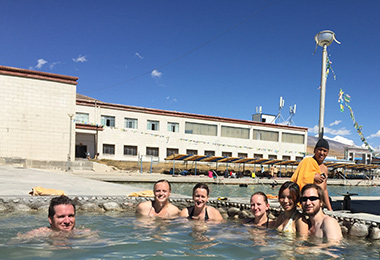
.jpg)